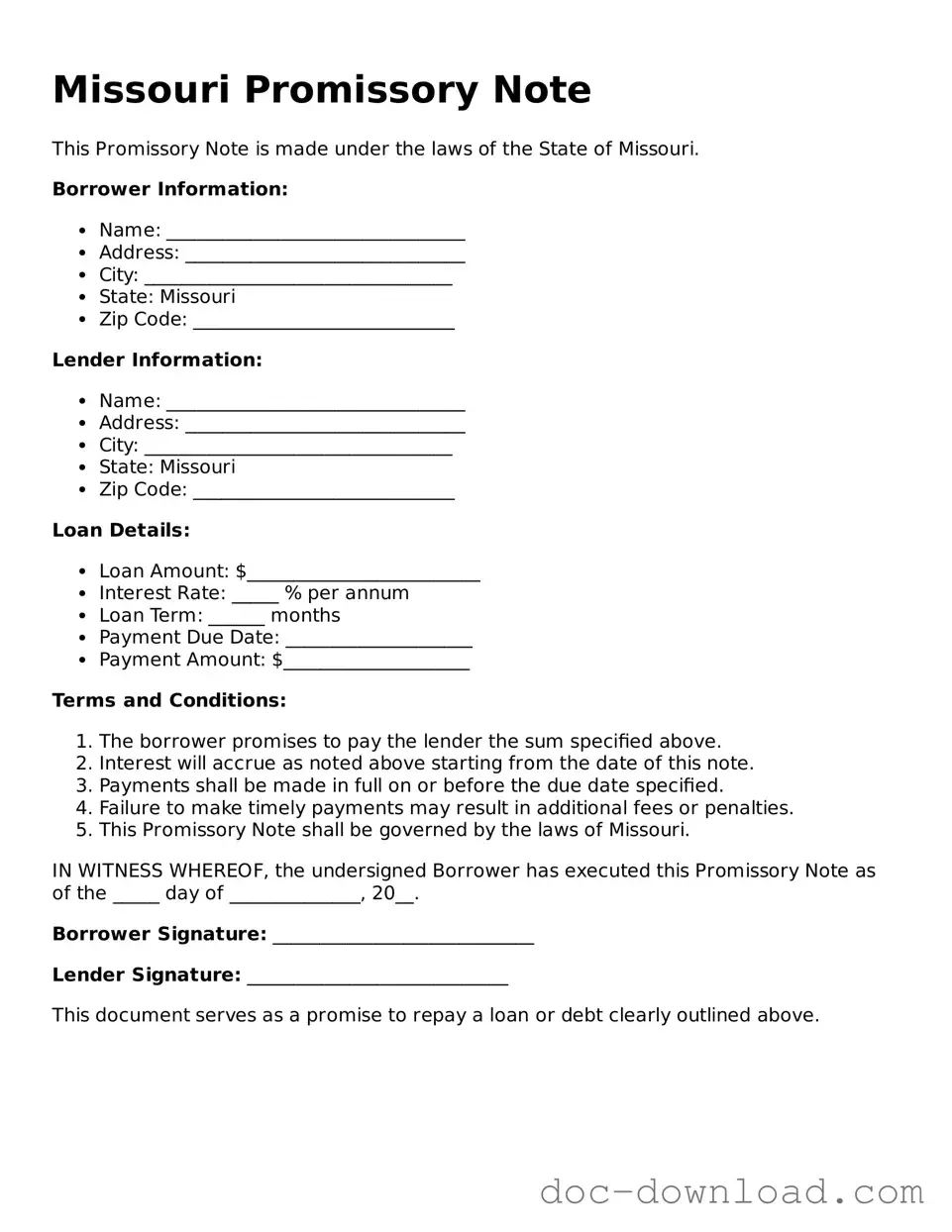A loan agreement is a document that outlines the terms and conditions under which a borrower receives funds from a lender. Similar to a Missouri Promissory Note, it includes details such as the loan amount, interest rate, repayment schedule, and the consequences of default. Both documents serve to protect the interests of the lender while providing a clear framework for repayment obligations by the borrower.
A mortgage agreement is another document that shares similarities with a promissory note. It secures a loan with real property, allowing the lender to take possession of the property if the borrower fails to repay the loan. Like a promissory note, it details the amount borrowed, interest rates, and repayment terms, but it also includes clauses related to the property itself, which is not typically found in a standard promissory note.
A personal guarantee is a document where an individual agrees to be responsible for a loan or debt if the primary borrower defaults. This is similar to a promissory note in that it establishes an obligation to repay a debt. However, a personal guarantee often involves additional parties and can provide an extra layer of security for the lender.
A business loan agreement is akin to a promissory note but specifically designed for business purposes. It outlines the terms of borrowing for a business entity, including the loan amount, interest rate, and repayment schedule. Both documents serve to formalize the lending process, but a business loan agreement may also include provisions related to business operations and collateral.
A lease agreement can resemble a promissory note when it includes a provision for future payments. In some cases, a lease may require a security deposit or advance rent payments, similar to how a promissory note outlines repayment terms. Both documents establish financial obligations, but a lease agreement typically governs the use of property rather than a direct loan.
An installment agreement is a payment plan that allows a borrower to pay off a debt over time. This is similar to a promissory note, which often specifies a repayment schedule. Both documents detail the amount owed and the payment frequency, but an installment agreement may also include additional terms regarding late fees or penalties for missed payments.
A forbearance agreement is a document that temporarily suspends or reduces payments due on a loan. This is similar to a promissory note in that it addresses the borrower's obligations. However, a forbearance agreement specifically outlines the terms of the temporary relief, including how the borrower will resume payments and any adjustments to the repayment schedule.
When entering into various financial agreements, understanding the associated legal implications is essential. For instance, when navigating the complexities of a Hold Harmless Agreement, it is crucial to ensure that all parties are aware of their responsibilities. This legal framework not only safeguards interests but also delineates risk factors that may arise during transactions. For those looking for standardized forms, the Colorado PDF Forms can provide the necessary documentation to facilitate these agreements effectively.
A debt settlement agreement is a document that outlines the terms under which a borrower agrees to pay a reduced amount to settle a debt. This is similar to a promissory note, as both involve the borrower’s commitment to repay a debt. However, a debt settlement agreement typically includes negotiated terms that differ from the original loan agreement, often reflecting a compromise between the lender and borrower.
An unsecured loan agreement is a document that outlines the terms of a loan that is not backed by collateral. Similar to a promissory note, it specifies the loan amount, interest rate, and repayment terms. Both documents create a legal obligation for the borrower to repay the funds, but an unsecured loan agreement carries a higher risk for the lender, as there is no collateral to claim in case of default.
A credit agreement is a document that defines the terms of a credit arrangement between a lender and a borrower. This is similar to a promissory note, as it specifies the amount of credit extended, interest rates, and repayment terms. Both documents establish a financial relationship, but a credit agreement may also include conditions related to credit limits and fees associated with late payments.
